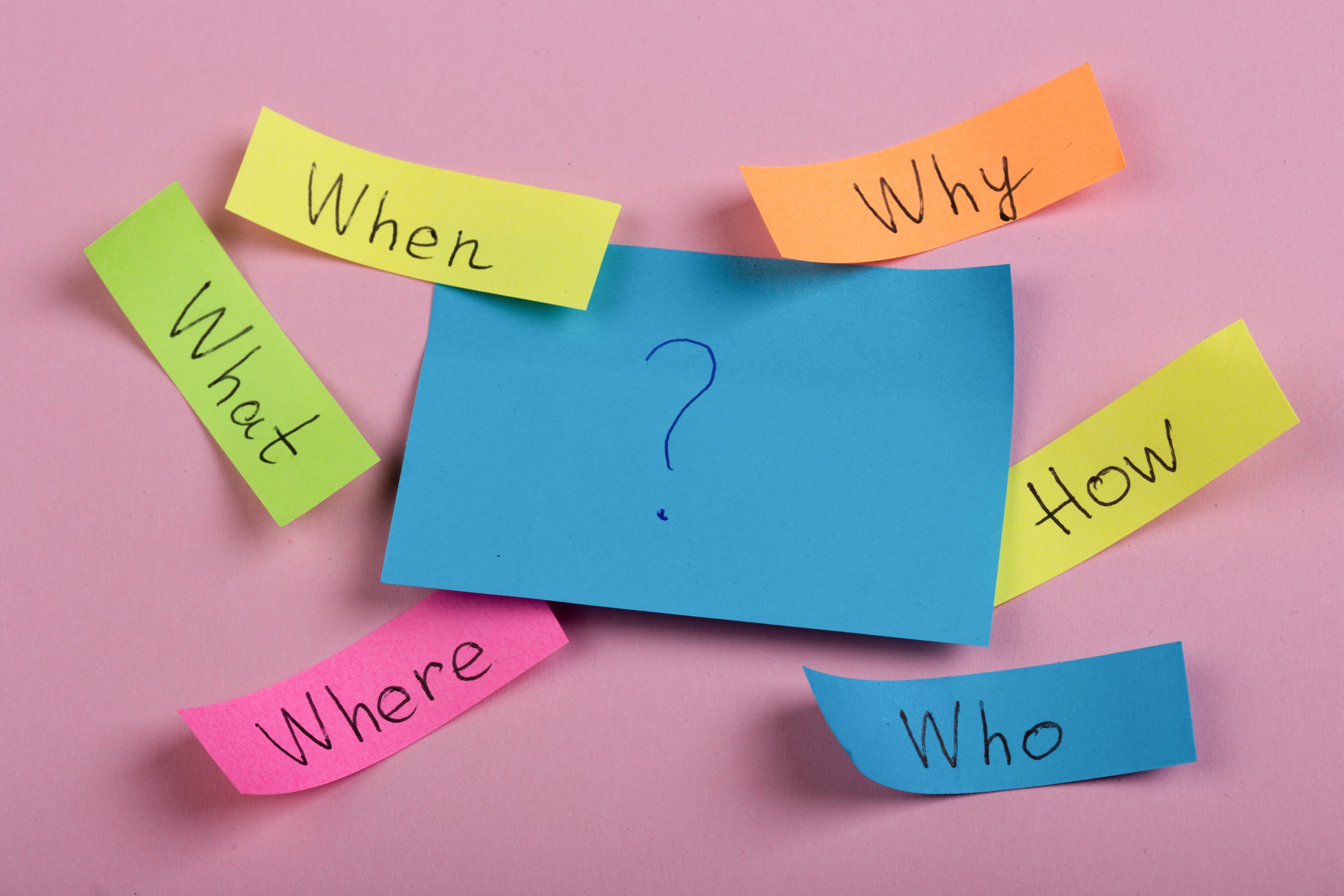A question is an invitation. It’s a way of encouraging students to deepen their thinking and share their knowledge.
Effective questioning techniques take practice, but the first step is being clear about the purpose of asking questions in class. In this blog, we will take a look at some different types of purposes for questioning and we’ll also explore what types of questions work best with each purpose.
The important thing to remember is that all questioning should be guided by a specific goal in mind.
Purposes of Asking Questions

Questions posed in class achieve a myriad of purposes, such as:
- To pique the interest and/or curiosity of students
- To review or summarize lessons
- To deepen understanding and/or uncover relationships between concepts/topics
- To activate prior knowledge
- To assess understanding
Types of Questions
Effective questioning techniques do not only require a clear idea of the purpose(s) of asking questions but we will also need to understand the different types of questions.
Broadly speaking there are two categories of questions; close-ended and open-ended questions. The question types which we will be discussing in the latter section can be categorised into either of these. But, what exactly are close- and open-ended questions in the first place?

Close-ended questions are those which have limited responses, with options presented such as multiple-choice questions, true/false, yes/no, etc. On the other hand, open-ended questions are not limited by any option; the responses can be very varied, deep and/or broad.
For brainstorming or discussions, generally speaking, close-ended questions are excellent for the purpose of convergence (ie coming to a consensus) whereas open-ended questions are great for divergence (ie generating varied views).
The types of questions we are discussing below are open-ended questions, unless you as the teacher, provide the options for students to choose from.
1. Recall questions
This is when you ask students to explain something that you’ve already discussed in class or something which they have experienced/learnt before. This is a marvelous way of activating prior knowledge at the start of the class or to assess knowledge as a way to end the lesson.
2. Probing questions
This is one that asks for additional information—it’s kind of like asking how or why for more information about a certain topic.
3. Clarifying questions
These questions clarify the information by getting to the root of what a student doesn’t understand or if the student’s response lacked key information. They usually begin with What…? or Why…? For example, if a student says he understands how to find the slope using two points on a graph, I might ask him to explain how he knows his answer is correct.
4. Rhetorical questions
As the Cambridge Dictionary puts it, it is “a question, asked in order to make a statement, that does not expect an answer”. It can be used for a variety of purposes such as to engage your students at the start of the lesson for example, “If all living things need food, how then do plants get theirs?” Another purpose could be to build rapport with your students by highlighting your similarities, e.g., “When we look at this topic on quadratic equations, do we wonder how it seems rather irrelevant in our lives?”
Matching Purpose with Question Types
Now that we have an idea of the purposes and types of questions, demonstrating effective questioning techniques will require us to put these together.
The table below summarizes the question type(s) you can choose to use according to your intended purpose. Do bear in mind though, that any of these questions can be close-ended if options are given.
| Purpose | Question Type |
| To pique the interest and/or curiosity of students | Rhetorical question Ex: Have you ever wondered why we are not floating around on earth like astronauts in space? |
| To review or summarise lessons | Recall question Ex: What are the key learning points from today’s lesson? |
| To deepen understanding and/or uncover relationships between concepts/topics | Probing & Clarifying questions Ex: What do you mean when you said that the author was “not actually present”? What made you say so? |
| To activate prior knowledge | Recall question Ex: What do you understand about the word “claims”? |
| To assess understanding | Any of the above except Rhetorical question since it does not require students to respond to it. |
Questioning Techniques to Encourage Student Participation

No matter how much time and effort you as the teacher, had spent on crafting excellent, appropriately challenging questions, employing effective question techniques also involve encouraging students to participate by answering these questions. Surely silence is not golden when students are unresponsive!
So how can we support our students to encourage participation? The five strategies shared here are based on the work of Marzano & Pickering1:
1. Call on students randomly
This helps keep every student on their toes so every student will need to mentally generate their response in case they are called upon. Randomly calling on students can be quickly and easily done with ClassPoint’s Name Picker tool.
2. Paired response
Also known as think-pair-share, this is a strategy in which students are given time to discuss with a partner before responding to the entire class. In this way, everyone has to be engaged in formulating the responses, which is a great way to set students up for success.
3. Having wait time
Provide sufficient time for students to process their thoughts before responding helps students to be more confident of their answers as compared to a student who has not been given the time. In such a case, the student may not even have any response to provide. As a general rule of thumb, cater a longer wait time for a more complex question than one which is rather straightforward. Catering time for students to process their thoughts first will also enable more students to respond to the question, and not merely restrict it to the quick-thinkers.
4. Response chaining
This strategy involves having student responses linked to one another. When one student responds, others will subsequently respond to his/her response by either correcting that response, explain why it was correct or rectify the partially-incorrect portion.
For instance, in response to the question on the name of the process in which plants make food, student A’s response is “photosynthesis”. You can then ask student B what this process entails and student C may be asked to correct student B’s partially-correct answer.
5. Simultaneous individual response
With this method, everyone responds to the question at the same time. In a no-tech environment, students may be asked to write their responses on individual whiteboards and to reveal them simultaneously. In an environment where students have devices, ClassPoint’s interactive questions such as multiple choice activity, word cloud, short answer and many others, to support individual submissions.
Conclusion
In conclusion, there are many ways you can ask questions. All of them have unique benefits and drawbacks, which is why it’s important to think carefully about what you’re trying to achieve when you question a student.
Some questions work well for fostering active engagement but aren’t effective for assessing understanding such as rhetorical questions. Others allow students a chance to demonstrate mastery in an open-ended way but may not provide a concrete enough opportunity for feedback from teachers who want something specific from their students at that moment in time.
The clearer you are about your goals and objectives as a teacher, and how those goals match up with different questioning strategies, then the better equipped you will be to create learning experiences that set students up for success and help you achieve your educational aims.

If you are interested in ClassPoint learn more here, and if you are interested in how you can use ClassPoint to give students feedback check out this video. ▶️
Reference
- Marzano, R., & Pickering, D. J. (2017). The Highly Engaged Classroom Publisher: Marzano Research Laboratory. Solution Tree Press.

